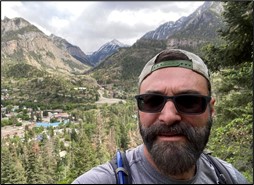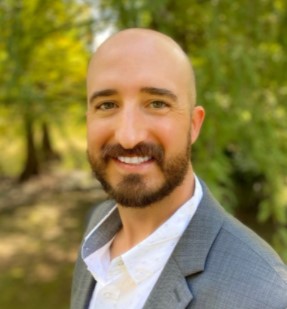Imagine the possibilities if brilliant scientists and engineers could figure out how to use natural materials like silt and clay, dredged from waterways, to make nature-inspired, 3D printed structures like reefs and roots to restore habitat and protect coastal shorelines. In Season 7, Episode 6, host Sarah Thorne is joined by Al Kennedy, Burton Suedel, and Andrew McQueen from the US Army Corps of Engineers (USACE), Engineer Research and Development Center (ERDC). All three are Research Biologists in the Environmental Laboratory at ERDC. They’re discussing the 3D printing workshop they hosted in February 2024 to explore the potential of nature-inspired 3D printing. As a special feature of this episode, several of the workshop participants share highlights from the workshop discussions and the inspiration for their future work.
Why is the exploration of 3D printing so important now? As Al notes, there are many pressing national issues underscoring the importance of research, development, and innovation in this area, including coastal resilience challenges associated with climate change, restoring and creating new habitat, and addressing the growing issue of outdated and aging infrastructure. “We really need to pursue more sustainable use of local building materials. We believe that it’s possible to improve the Civil Works’ mission delivery by leveraging emerging and disruptive technology innovations such as 3D printing.” He adds, “The design freedom of 3D printing unlocks the constraints on traditional infrastructure engineering with simple bioinspired design, leveraging natural geometries. The results include more pleasing recreational uses, improved ecological functionality, plus economic and social benefits.”

Speaking of USACE’s navigation mission, Burton notes that the Corps dredges more than 200 million cubic yards of sediment from navigable waterways every year. “There’s a great opportunity here. Lieutenant General Spellman spoke about his 70/30 goal—achieving 70% beneficial use of dredged material by 2030—in Season 5, Episode 6. We need to value the dredged material that comes out of our federal navigation channels as a resource and look for opportunities to use it beneficially wherever and wherever we can.” Burton adds that “3D printing lets us take this valuable resource—this sediment—and use it in new and novel ways.”
The workshop was a key step in advancing the potential of 3D printing. As Andrew says, “We really wanted to bring together a diverse group of experts from government, academia, and the private sector to explore the potential of 3D printing using natural materials.” Al adds, “Our goal was to lay the groundwork to advance practical implementation of 3D printing into nature-inspired infrastructure. We started with lab tours of the ERDC Environmental Lab, the Geotechnical and Structures Lab, and the Information Technology Lab to show the diversity of expertise we have here. Then we kicked off the workshop with guest speakers defining the challenges and opportunities for 3D printing nature-inspired infrastructure. Working in breakout groups, we then asked participants to provide short-, medium-, and longer-term research ideas and research needs to push this effort forward.”
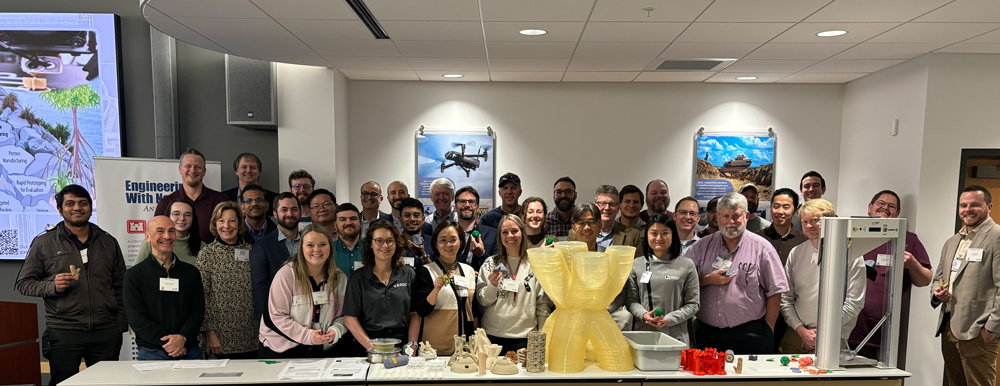
The breakout groups focused on four major research areas:
- Ecosystem restoration and bio
–inspired design—How does ecology drive the design needs for habitat, ecosystem recolonization, and restoration? - Coastal resilience and sustainability—What areas need research to develop methods for erosion control or dissipation of storm energy, and how this would be done through structures?
- Sediment properties—What materials might be available locally, including dredged sediments, and which ones might have the right properties to be printable and have a resilient structure?
- Scale up—How do we go from lab-scale printing to printing big things on-site and on demand to make these big ideas a reality?
On the second day, each of the breakout groups presented highlights from their discussions. This episode features some of their key points. A report on the workshop results will be available on the EWN website.

From the perspective of the organizers, Al, Burton, and Andrew, the workshop exceeded expectations. As Andrew says, “We learned a ton. One of the key themes we took away was that we really have an opportunity now to categorize materials and feedstocks that could be used for specific 3D print applications. This could really move us a lot closer to our future goals. Linking these feedstock resources, like dredge sediment, identifying spec sheets, and providing that to the additive manufacturing world is really the next step and will start breaking down the technology silos.”
Other key discussions and takeaways from the workshop include the following:
- The importance of being more intentional with infrastructure design, incorporating nature-inspired features to leverage optimizations from nature and deliver multifunctional materials that offer co-benefits like habitat enhancement alongside primary infrastructure objectives.
- Discussions on the properties of natural materials and their performance in 3D printers, including stability of end products, and the potential need for pre- and post-processing to meet requirements.
- Exploring and innovating the best applications for 3D printed materials, such as utilizing dredged material from confined disposal facilities (CDFs) for ports and coastal areas, enhancing community resilience with new or rehabilitated infrastructure like berms.
- The necessity for maturation and scaling up of 3D printing applications, transitioning from lab-scale to larger format printers suitable for field use, encompassing nozzle design and managing available dredge material for use.
- The potential safety benefits of using 3D printing to automate infrastructure production in hazardous work environments.

Synergy, engagement, and collaboration was evident throughout the workshop, and participants expressed a strong interest in continuing the dialogue. “A primary workshop objective was to test the waters to see if there would be interest in forming a community of practice around 3D printing of nature-inspired infrastructure using natural materials, and clearly there was,” Al notes. “We want to encourage people, beyond the February workshop participants, to get in touch if they’re interested in being part of this new group.” Burton agrees, noting it is important to keep the momentum going: “The Community of Practice gives us more opportunities to engage as subject matter experts in this evolving field. We’re looking for opportunities to engage at upcoming conferences, we’re creating an email listserv, and we’ll continue promoting and talking about these ideas broadly. This episode of the podcast is just a start.”
One of the ways that they’re planning to share the information is through a database called the Material Process Property Warehouse being developed by ERDC and the University of Maine. The database will keep track of the processes used in nature-inspired projects and resulting material properties, providing information that can drive data collection and future designs. As workshop participant and engineer at ERDC’s Geotechnical and Structures Lab Lucy Slattery notes, “The Warehouse will provide more confidence in how we actually approach these problems, across the board for additive manufacturing but particularly for bioinspired design. It’s really significant because we’re already trying to push the bounds with implementing an additive construction forum; we’re pushing the bounds geometrically to try and make these bioinspired shapes; and we’re pushing the bounds materially because we’re trying to use a material that hasn’t been used in the ways we’re trying to use it. The more confidence we can provide in this technology, the more likely it is to really be able to take hold and provide the benefits that we all want to see.”
Al, Burton, and Andrew are very excited about the future for 3D printing with natural materials using nature-inspired design. As Andrew notes: “I’m very enthusiastic about this topic and I kind of ‘nerd out’ about the potential for 3D printing. When I first saw it demonstrated years ago, I walked away thinking ‘we’re living in the future.’ What I learned at this workshop is that these technologies are here and they’re advancing at a crazy rapid pace. It just screams opportunities to innovate our built environment.” Burton agrees: “The way in which we can apply 3D printed materials in the natural environment gives us a tremendous number of opportunities and upside going forward, not only in increasing the beneficial use of dredge material but also for improving resiliency of infrastructure and also communities by reducing coastal storm risk and flood risk in the future.”
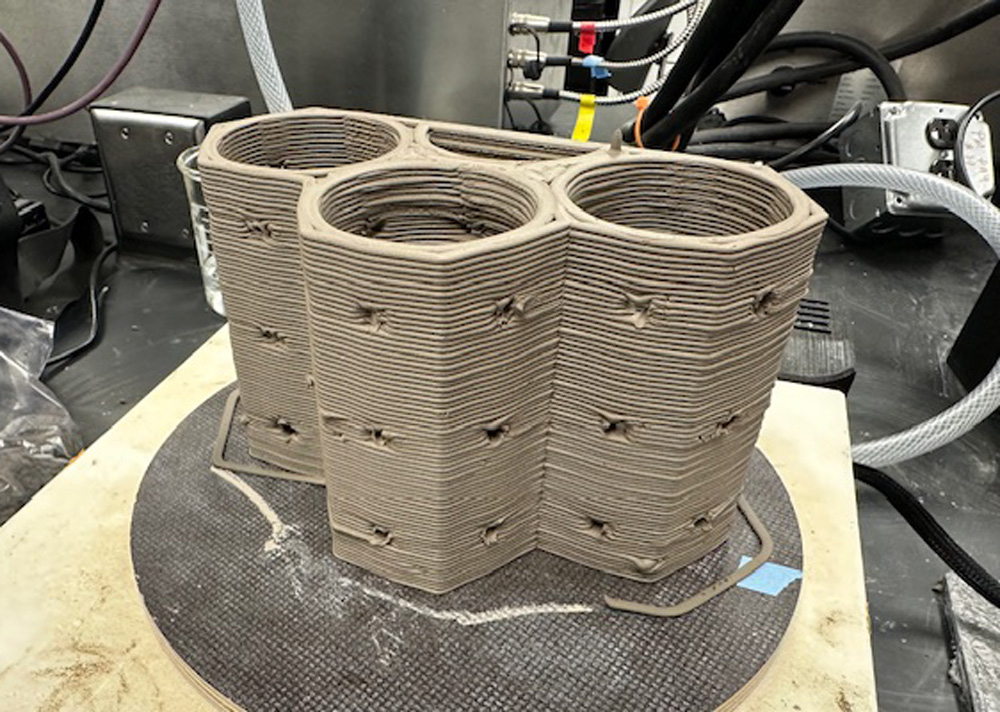
Immediately following the workshop, participant Adam Friedman, with 1Print, a 3D printing construction company, asked if ERDC could use dredged material to print a small-scale version of his company’s Seahive® technology structure. Current concrete applications are being used for seawalls, breakwaters, and artificial reefs. Adam and his 1Print colleagues were planning to attend the Aspen Ideas: Climate Conference and wanted something that they could show at their booth. As Adam notes, “The dredged material Seahive that the team at ERDC was able to print out on their small-scale printer was the most talked about item at our expo booth.” He underscores the groundbreaking advancement this represents: “This is many technologies that we’re forming into one. Whether it’s the 3D printing technology, the dredge material technology, and the Seahive technology—these are all very high-tech technologies and components, and they are all converging in one product.”
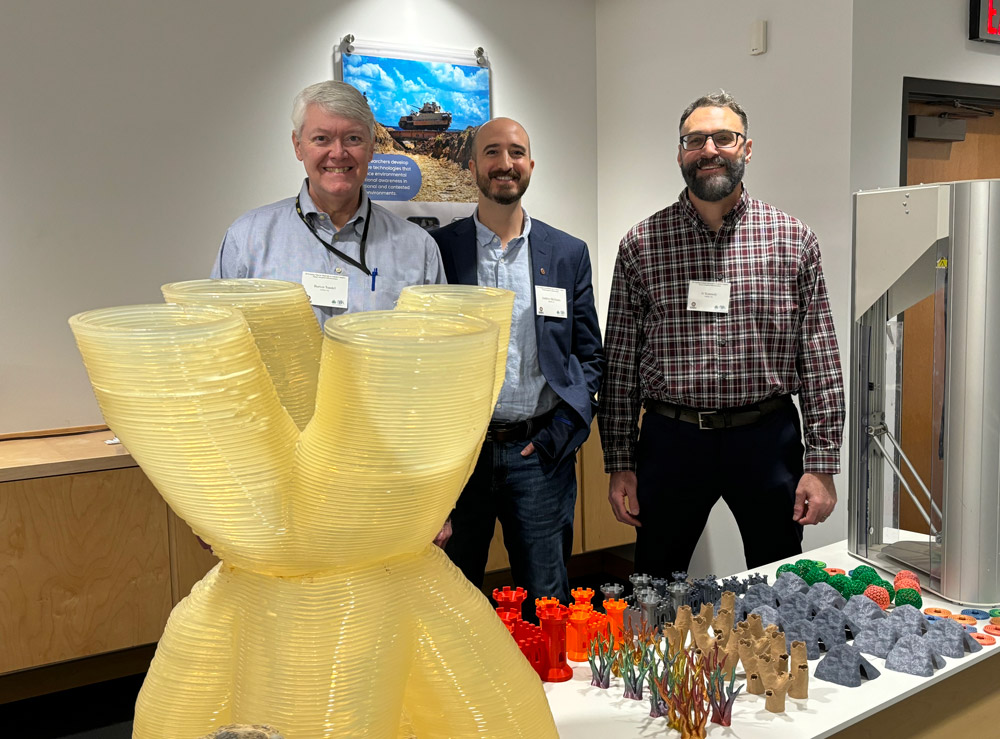
Thinking about the success of workshop and what’s ahead, Al notes, “It was certainly a lot of work and daunting going into it, but it was definitely worthwhile. I hope we’ve adequately expressed our excitement about the potential benefits of this disruptive technology for the Army Corps of Engineers and for the world. Our respective ERDC laboratories are excited, stimulated, and focused on creating a different and better future with nature-inspired 3D printed materials. Stay tuned!”
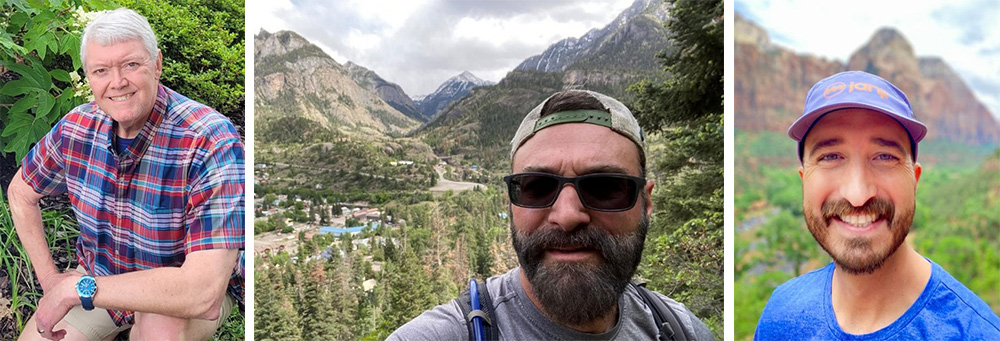
Workshop Participants who Contributed to this episode
- Pablo Zavattieri at Purdue
- Pablo Zavattieri at LinkedIn
- Jeff Youngblood at LinkedIn
- Jeff Youngblood at Purdue
- Narayanan Neithalath at ASU
- Narayanan Neithalath at LinkedIn
- Tyler Oathes at LinkedIn
- Tyler Oathes at Rutgers
- Wendell Mears at LinkedIn
- Tyler Ortego at LinkedIn
- Abbie Lloyd at LinkedIn
- Adam Friedman at LinkedIn
- Christopher Williams at LinkedIn
- Daniel Wangpraseurt at Coral Reef Engineering
- Lucy Slattery at LinkedIn




